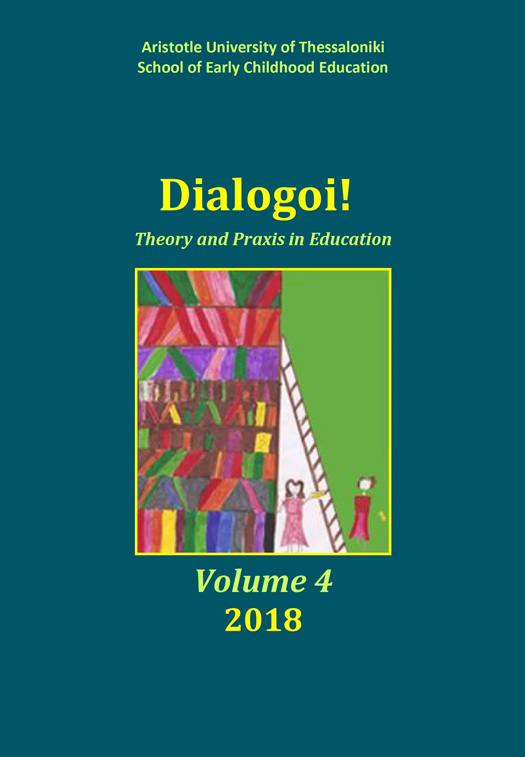Movement development through an interdisciplinary program of Physical Education and children’s literature in kindergarten

Abstract
An important aim of Physical Education (P.E.) in the preschool curriculum is the promotion of physical fitness as well as the motor skill development that constitute indicators of normal movement development and school readiness (Gallahue, 2002· Pedagogical Institute, 2011). Creative movement helps children to construct new motor skills and exercise acquired movement schemas. Structured physical activities based in improvisation constitute important elements of preschool P.E. as long as they provide opportunities of emerging gross motor expression and trigger emotional reactions (Bergstein Dow, 2010· Pavlidou, 2012). According to the Preschool Educator’s Guide, cross-curricular thematic instruction allows children to integrate content and skills from multiple content areas into one cohesive learning experience (Dafermou, Koulouri, & Basagianni, 2006). Movement activities can contribute to the acquisition of knowledge and skills from different disciplinary areas such as mathematics and music (Shilling, 2002), computer science (Papastergiou, 2009) and language (Connor-Kuntz & Dummer, 1996· Goti, Derri, & Kioumourtzoglou, 2006· Goti-Douma, 2006· Tsapakidou, Zachopoulou, & Samara, 2001).
Basic aim of the present study was to assess the effectiveness of a preschool cross-curricular P.E. program in the development of motor skills through children’s literature books. Our hypothesis was that a cross-curricular designed P.E. program using storytelling of children’s literature books as the main guide of kinetic direction and movement exploration can contribute to the development of basic motor skills in preschoolers. The current study aimed to assess the effectiveness of a preschool cross-curricular P.E. program with emphasis on a storytelling based on children’s literature books.
Storytelling was used to guide creative movement and to provide opportunities of motor experimentation, and expression. The selected children’s literature books depicted the story grammar structure (Mandler, 1984). Pressley and Woloshyn (1995) story grammar rules were also adapted and used for the construction of the activities.
To investigate the hypothesis, a research intervention was designed. A total of 50 children participated in the research, classified randomly in three groups (one experimental and two control groups) based on their structural and program differences. The experimental group consisted of 18 children (boys, n = 10 and girls, n = 8; Μ: 70.7, SD: 2.96), the first control group consisted of 16 children (boys, n = 11 and girls, n = 5; Μ: 69.8, SD: 2.89), and the second control group consisted of 16 children (boys, n = 8 and girls, n = 8; Μ: 67.8, SD: 2.69). The intervention lasted for two months and involved two organized activities per week, of 45 minutes duration each. The first control group attended a typical P.E. program for two months, involving two organized activities per week, of 45 minutes duration each. Finally, the second control group did not attend any structured P.E. program, except free kinetic play by choice.
Four tests from the Karlsruher Motorik Screening 4 – 6 (Bös, Bappert, Tittlbach, & Woll, 2004) were used for the evaluation of the program and were administered in all groups twice, before and after the intervention. Non parametric Wilcoxon signed rank tests revealed significant improvement in three motor skills (balance, long jump, front bending of the trunk) for the experimental group and the first control group (side jumps, long jump, front bending of the trunk) after the implementation of the programs (interventional vs typical), and improvement in one motor skill (side jumps) for the second control group. Non parametric Kruskal-Wallis and Mann-Whitney tests revealed significant differences in two motor skills (long jump, front bending of the trunk) with the experimental group obtaining the highest scores.
Our findings showed that our hypothesis was verified to a satisfactory degree and confirmed the pedagogical value of the preschool cross-curricular P.E. program.Article Details
- How to Cite
-
Παυλίδου Ε., Χατζηγεωργιάδου Σ., & Γκαλκανοπούλου Ο. (2018). Movement development through an interdisciplinary program of Physical Education and children’s literature in kindergarten. Dialogoi! Theory and Praxis in Education, 4, 39–61. https://doi.org/10.12681/dial.15821
- Issue
- Vol. 4 (2018)
- Section
- Scientific columns

This work is licensed under a Creative Commons Attribution-NonCommercial-ShareAlike 4.0 International License.
Authors who publish with this journal agree to the following terms:
- Authors retain copyright and grant the journal right of first publication with the work simultaneously licensed under a Creative Commons Attribution Non-Commercial License that allows others to share the work with an acknowledgement of the work's authorship and initial publication in this journal.
- Authors are able to enter into separate, additional contractual arrangements for the non-exclusive distribution of the journal's published version of the work (e.g. post it to an institutional repository or publish it in a book), with an acknowledgement of its initial publication in this journal.
- Authors are permitted and encouraged to post their work online (preferably in institutional repositories or on their website) prior to and during the submission process, as it can lead to productive exchanges, as well as earlier and greater citation of published work (See The Effect of Open Access).


